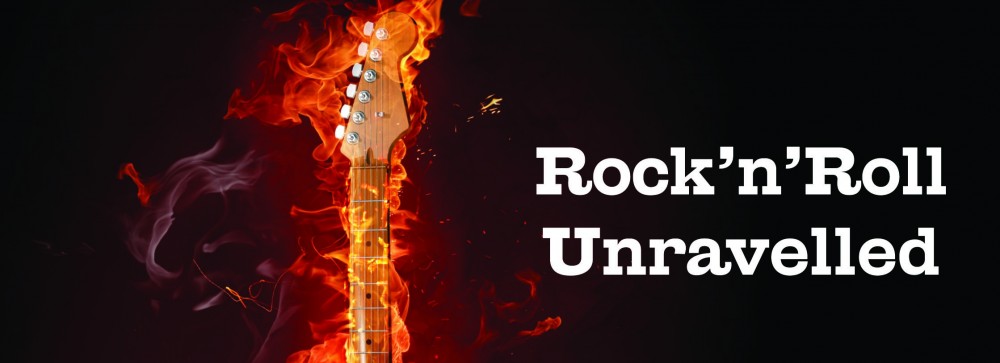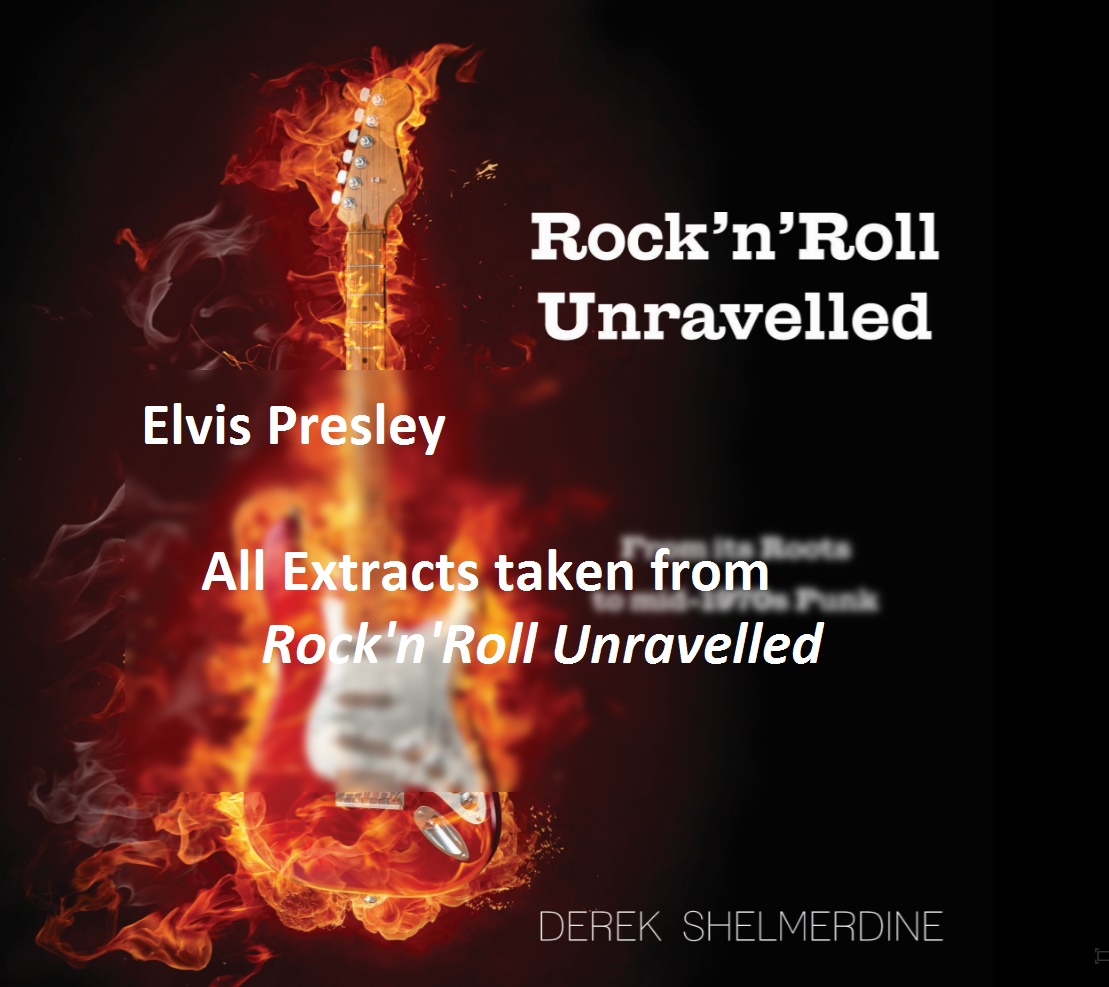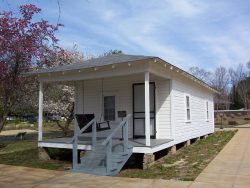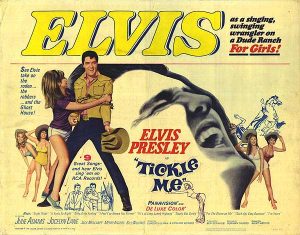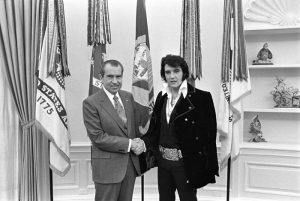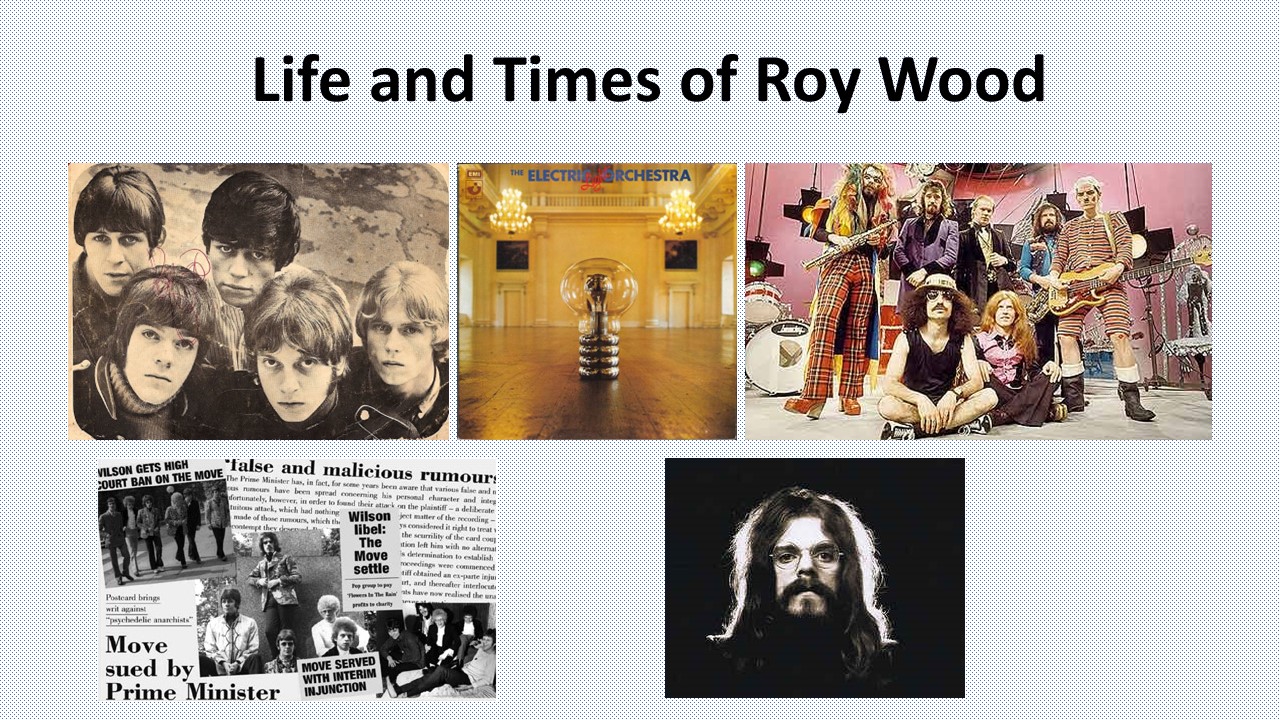Elvis Presley Extracts
All taken from Derek Shelmerdine‘s book
Rock’n’Roll Unravelled
The following Elvis Presley extracts are taken from the pages of Rock’n’Roll Unravelled and build up to tell the story of Elvis Presley. There are only a few of Elvis items here, to give a flavour of his story; the book has a far more comprehensive coverage.
(An * with a date indicates an associated story in Rock’n’Roll Unravelled, that story might not appear here.)
TO BUY THE BOOK
Rock’n’Roll Unravelled
Contents
1950s
- 18 July 1953: 1st private recording
- 4 January 1954: Second private recording with Sam Phillips
- 19 July 1954: Released his 1st single
- 2 October 1954: Elvis’s only performance at the Grand Ole Opry
- 6 November 1954: Elvis’s only advertisement – Southern Maid donuts
- 15 August 1955: Now managed by Bob Neal and the Colonel
- 10 January 1956: Recorded Heartbreak Hotel
- 23 April 1956: First appearance in Las Vegas
- 9 September 1956: First appearance on the Ed Sullivan Show
- 15 November 1956: First movie, Love Me Tender, opened in New York
- 29 December 1956: 10 singles on Billboard Hot-100
- 31 August 1957: Last concert outside the USA
- 24 March 1958: US Army time
1960s
- 25 March 1961: Last live performance for seven years
- 28 May 1965: 18th movie, Tickle Me – recycled soundtrack
1970s
- 21 December 1970: Elvis met President Nixon
- 29 April 1976: Bruce Springsteen almost knocked on Elvis’s door
- 23 November 1976: Jerry Lee Lewis arrested outside Graceland
- 6 June 1977: Released Way Down c/w Pledging My Love – last single in his lifetime
- 16 August 1977: Has left the building (for the very last time!)
- MORE ELVIS INFO ON THIS SITE + Elvis Quiz
8 January 1935: Elvis Presley, “The King of Rock and Roll” was born
Elvis Presley was born to Gladys Love and Vernon Presley in their home at 306 Old Saltillo Road, East Tupelo, Mississippi. His twin brother Jesse Garon was stillborn. When Elvis was just three years old Vernon was sentenced to serve three years imprisonment for forging a cheque. On 3 October 1945 Elvis gave his first public performance, singing Red Foley’s Old Shep in a talent competition at the Mississippi-Alabama Fair and Dairy Show. Elvis famously bought his first guitar at the Tupelo Hardware Company on his eleventh birthday. He was served that day by Forrest L Bobo, who remembered the incident well, “He wanted to buy a 22 cal. rifle and his mother wanted him to buy a guitar”. The Presley family relocated to Memphis in 1948 and moved into federal-funded accommodation at 185 Winchester Avenue, Lauderdale Courts. His confidence was growing and he performed at school events and elsewhere.
Elvis graduated from Humes High School on 3 June 1953 as a part of Class 202 and found employment as a truck driver for the Crown Electric Company.
18 July 1953: 1st private recording
Elvis Presley called into Sam Phillips’s Memphis Recording Service studio for the first time, paid his $3.98 and recorded My Happiness and That’s When Your Heartaches Begin. When Sam Phillips’s assistant Marion Keisker asked Elvis who he sounded like, he famously replied, “I don’t sound like nobody.”
Controversy surrounds whether Phillips or Keisker operated the tape that day. Doubt has also been cast on the idea that the recording was a birthday present for his mother Gladys. It would have been rather belated, given that her birthday was on 25 April.
4 January 1954: Second private recording with Sam Phillips
Elvis Presley made his second visit to Sam Phillips’s Memphis Recording Service and recorded two songs, I’ll Never Stand in Your Way and It Wouldn’t Be the Same Without You. Both songs were co-written by Fred Rose, who founded the Acuff-Rose music publishing company in Nashville in 1942.
Some sources list Casual Love Affair as the second song recorded that day but according to Master and Session: Elvis Presley Studio Recordings’ website, “When this acetate was discovered a few years ago it turned out that the second song was It Wouldn’t Be the Same Without You, instead of Casual Love Affair”.
It was on the strength of this private recording that Sam Phillips invited Elvis back six months later to see how he sounded with the song Without You. That did not quite work out but it did lead to Elvis releasing his first Sun single, That’s All Right, on 19 July*.
19 July 1954: Released his 1st single
When Elvis made his second private recording at the Memphis Recording Service on 4 January*, owner Sam Phillips told him that he would give him a call if he found a song that he felt would suit Elvis. On a trip to Nashville, Phillips came across a song called Without You and duly called Elvis to come into the studio and try it out. The audition didn’t go too well but rather than give up on the young singer, Phillips introduced him to guitarist Scotty Moore and bass player Bill Black. Phillips asked Elvis to perform some other songs that he knew. They tried out a few numbers and on 5 July and with Phillips at the controls they recorded That’s All Right. This was coupled with Blue Moon of Kentucky to give Elvis his 1st single on Sun Records.
A couple of days later Phillips gave Memphis disk jockey Dewey “Daddy-O” Phillips (no relation) an acetate of the recording and he famously became the first DJ to play That’s All Right on his Red, Hot and Blue show on Radio WHBQ.
The single credited the performance to Elvis Presley, Scotty and Bill and coupled two 1940s covers. The A-side was written and originally recorded by Arthur Crudup, with the B-side written and recorded by Bill Monroe and His Bluegrass Boys.
2 October 1954: Elvis’s only appearance at the Grand Ole Opry
Elvis Presley made his first and last appearance on the hallowed boards of the Grand Ole Opry’s stage. The country audience did not take to Elvis’s style and his reception was decidedly lukewarm. The Opry’s manager, Jim Denny, spoke to Elvis backstage after his performance and suggested that he should “consider giving up singing and return to truck driving”.8
In an ironic twist of fate, Elvis’s first showing on the national charts was in the country listings in 1955, with his Sun release Baby Let’s Play House. It would take his RCA debut with Heartbreak Hotel in March 1956 before he managed to put in an appearance on the pop charts.
6 November 1954: Elvis’s only advertisement – Southern Maid donuts
The only radio commercial that the King of Rock’n’Roll ever made aired on the Shreveport concert show Louisiana Hayride.
It was for Southern Maid donuts and the jingle enticed the local populous not only to buy them but to “get ‘em piping hot”.
15 August 1955: Now Managed by Bob Neal and the Colonel
Despite still being under contract to his original manager Bob Neal, Elvis Presley signed a management deal with Colonel Tom Parker.
Presley signed his first management contract, with Bob Neal on 1 January 1955. Parker had heard Elvis perform on the Louisiana Hayride radio show on 15 January and made his first booking for the King of Rock’n’Roll a month later. Neal was providing gigs in the Southern States and the Colonel came on board to broaden Presley’s horizons. Neal was Presley’s manager for a little over a year. Parker ensured Presley’s future by arranging the deal to move him from Sun Records to RCA on 20 November*.
10 January 1956: Recorded Heartbreak Hotel
For the first time since leaving Sam Phillips and Sun Records Elvis was back in the recording studio, this time for his new record company RCA. He was accompanied by his old Sun buddies, guitarist Scottie Moore and upright-bass player Bill Black. By now he had also acquired a regular drummer DJ Fontana and added the services of legendary Nashville session musicians, guitarist Chet Atkins and pianist Floyd Cramer.
The song was written by Tommy Durden and Mae Boren Axton after spotting a newspaper article headed “Do You Know This Man?” The paper wanted to identify a man who had killed himself and left a note simply saying, “I walk a lonely street”.
23 April 1956: First appearance in Las Vegas
Elvis, billed as “The Atomic Powered Singer”, played a two-week stint at the New Frontier Hotel in what was his first-ever appearance in Las Vegas. He was ably assisted by guitarist Scotty Moore, bassist Bill Black and drummer DJ Fontana. Unfortunately, the Vegas crowd was not ready for Elvis yet and his reception was decidedly lukewarm.
Elvis would not play Vegas again until 1969. That would be a very different Elvis and without Scotty, DJ and Bill.
9 September 1956: First appearance on Ed Sullivan Show
When Elvis made his first appearance on the Ed Sullivan Show he attracted an audience of 60 million42 viewers, representing an audience share of a staggering 82%42. On the show he performed Don’t Be Cruel, Love Me Tender, Ready Teddy and Hound Dog.
Sullivan was a bit slow off the mark in securing Presley for his TV show. The King’s first TV appearance had been on the Dorsey Brothers’ Stage Show on 28 January*.
15 November 1956: First movie, Love Me Tender opened
The first Hollywood venture for Elvis Presley, Love Me Tender, opened at New York’s Paramount cinema in Times Square.
Originally called The Reno Brothers, the movie’s name was changed to cash in on Elvis’s growing popularity. This was to be the only occasion where Elvis’s character died and he did not receive top billing.
Elvis also starred in Loving You, Jailhouse Rock and King Creole, before being inducted into the United States Army on 24 March* 1958. When Elvis returned from his military service the only access his fans had to him was through his, much maligned, 1960s cinema appearances. Excluding the concert documentaries Elvis made 31 movies, drawing to an end with Change of Habit released on 10 November*1969.
29 December 1956: Ten singles on Billboard Hot-100
Elvis had ten entries on Billboard’s Top 100, a phenomenal achievement considering that he had only recorded his first single for RCA, Heartbreak Hotel, on 10 January*.
Two of the songs, Love Me Tender and Poor Boy were from the soundtrack of Elvis’s first movie Love Me Tender, released on 15 November*. Five of the songs on the chart listing were covers. Hound Dog was written by Leiber and Stoller and recorded by Big Mama Thornton on 13 August* 1952. Blue Moon was written by Rodgers and Hart and performed by Shirley Ross as The Bad in Every Man in the 1934 movie Manhattan Melodrama. Old Shep was written and recorded by Red Foley in 1935, this was the first song that Elvis ever performed in public, at a talent show in Tupelo on 3 October 1945.
31 August 1957: Last concert outside the USA
Elvis Presley gave his final concert outside America, with a performance in neighbouring Canada at Vancouver’s Empire Stadium. The concert posters billed Elvis’s vocal backing group the Jordanaires and his bass player’s group the Bill Black Combo separately. The gig was attended by over 20,000 excited fans. Soon after Elvis started his performance fans rushed the stage and the show was halted whilst they were urged to return to their seats. Elvis resumed his set but another stage rush shortly afterwards resulted in the show being cut short. Music critic for the Vancouver Province, Ida Halpern, described Elvis’s performance as “an artificial and unhealthy exploitation of the enthusiasm of youth’s body and mind … One could call it subsidized sex”.
This was only the third performance Elvis had given outside the USA but it was to be his last. Earlier in the year, on 2 and 3 April, he had given concerts in Toronto and Ottawa. With the exception of the US state of Hawaii, Elvis never again performed beyond the confines of Continental USA.
24 March 1958: US Army time
The US Army greeted 53310761, Elvis Presley, into its family when he was inducted at the Memphis Draft Board.
He received his army haircut the following day and proceeded to Fort Hood, Texas for basic training. He was there for six months.
Whilst on leave on 10 and 11 June he made what would be his last recordings for nearly two years. He recorded 5 songs: I Need Your Love Tonight, Ain’t That Loving You Baby, I Got Stung, A Fool Such As I and A Big Hunk O’ Love. Session artists included regular drummer DJ Fontana, guitarist Chet Atkins and pianist Floyd Cramer.
In October Elvis arrived at his German base in Friedberg, near Frankfurt, where he spent the next year and a half. In mid-September 1959 he met his future wife, the 14-year-old Priscilla Beaulieu. He was promoted to Sergeant in January 1960. Elvis’s two years of service life came to an end on 2 March when he flew out of Germany and headed for home. He was officially discharged on 5 March 1960.
Three weeks later Elvis returned to being the “King of Rock’n’Roll”. On 20 March* he was back in the studio working on his new album, Elvis Is Back, and cutting his first post-army single, Stuck on You. Filming for his fifth movie, GI Blues, started shortly afterwards and heralded the next phase of Elvis’s career – the 1960s Hollywood screen idol.
25 March 1961: Last live performance for seven years
Elvis gave a benefit performance at the Bloch Arena at Pearl Harbor to raise money for the building of the USS Arizona Memorial.
This would be his last live performance until the TV Special on 3 December* 1968 and his last concert performance until his appearance at the Las Vegas International Hotel on 31 July* 1969.
28 May 1965: 18th movie Tickle Me – recycled soundtrack
Elvis Presley’s eighteenth move, Tickle Me, received its premiere in Atlanta, Georgia.
When Elvis made Tickle Me for Allied Artists, the studio was experiencing financial difficulties. One of the cost cutting actions taken was to use songs already released, rather than to pay for musicians and songwriters to deliver a custom made movie soundtrack. Of the nine songs used for the movie: four had previously appeared on the 1962 album Pot Luck with Elvis; two were taken from Elvis is Back, released in 1960; and a song was lifted from 1961’s Something for Everybody. Two tracks were even recycled from previous soundtrack albums. Neither of the soundtrack songs had actually been used in the movies but they had both appeared as bonus tracks on the soundtrack albums: (It’s a) Long Lonely Highway from Kissin’ Cousins, written by Pomus and Shuman; and Slowly but Surely from Fun in Acapulco.
In Britain the nine songs were spread across two EPs, Tickle Me and Tickle Me Vol 2. The American release consisted of an EP and two singles. The EP had the same tracks as the first British EP. The two singles both made the American charts, I’m Yours and Otis Blackwell’s (Such an) Easy Question.
21 December 1970: Elvis met President Nixon
The King of Rock’n’Roll met the President of the United States of America, Richard Nixon, at the White House in Washington DC. Elvis was particularly keen to receive a BNDD (Bureau of Narcotics and Dangerous Drugs) badge and become an official drugs enforcement officer.
Elvis had initiated the meeting by sending President Nixon a hand-written letter, on American Airlines notepaper. In it he outlined his concerns for “our country”, which included “The Drug Culture, The Hippie Elements” and went on to request that he might be “made a Federal agent at Large”. He finished off his six-page letter by requesting a meeting “just to say hello if you’re not to [sic] Busy”46. After the meeting Nixon sent Elvis a thank you letter and expressed his gratitude for the commemorative World War II Colt 45 that Elvis had presented to him at their meeting.
Nixon agreed to Elvis’s request for an official BNDD badge, a possession that Elvis was extremely proud of.
29 April 1976: Bruce Springsteen nearly knocked on Elvis’s door
After finishing a gig at the Ellis Auditorium in Memphis, Bruce Springsteen and E Street Band guitarist Steve Van Zant jumped into a cab and sped off to Graceland in an attempt to meet Elvis Presley. When they arrived Springsteen climbed over the wall but before he could knock on Elvis’s door he was apprehended by security guards. His explanations fell on deaf ears and he was escorted from the premises. The guards failed to recognise Springsteen and considered him to be just another over-enthusiastic Elvis fan.
As it happened, his trip had been in vain because the King was in Lake Tahoe, Nevada, about to start a ten-day residency at the Sahara Tahoe Hotel. Springsteen had been joined on stage that evening by Eddie Floyd. They performed a number of songs together, including Floyd’s hit Knock on Wood.
23 November 1976: Jerry Lee Lewis was arrested outside Graceland
Jerry Lee Lewis was arrested outside Elvis’s Memphis home, Graceland. He was waving a gun around and demanding to see Elvis, reputedly asking a security guard to tell Elvis that “the Killer’s here to see him”. Rather than inform Elvis, the guard called the police and Lewis was arrested.
6 June 1977: Released Way Down c/w Pledging My Love – last single in his lifetime
Way Down was to be the last single issued in Elvis’s lifetime. Both songs were recorded during his last recording session, at his Graceland home on 29 October*.
The B-side, Pledging My Love, had been a posthumous crossover hit for R&B singer Johnny Ace in early 1955. Ace’s career had also been cut short but for him it was as the result of a game of Russian roulette, backstage at a gig in Texas on 25 December* 1954.
16 August 1977: Has left the building (for the very last time!)
In the early hours of the morning, Elvis was found lying in the bathroom of his Graceland home by his girlfriend Ginger Alden. She called for help but all attempts to revive him failed. He was taken to the Baptist Memorial Hospital in Memphis, where he was pronounced dead later that afternoon. At the age of 42, rock’n’roll’s greatest icon died of heart failure. There has been much speculation surrounding the King’s untimely demise, even to the extent of the urban myth that Elvis is still alive!
Elvis’s body was laid in an open casket in Graceland’s entrance hallway and an estimated 25,000 fans filed past to pay their last respects. The funeral was held two days later in the same room, with a short service at the Forest Hill cemetery chapel. In October Elvis and his mother Gladys, who died on 14 August 1958, were reburied side by side in the grounds of his Graceland home.
The story of Elvis Presley, to be continued…
